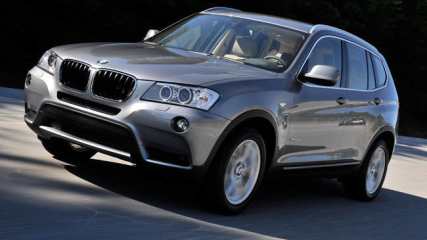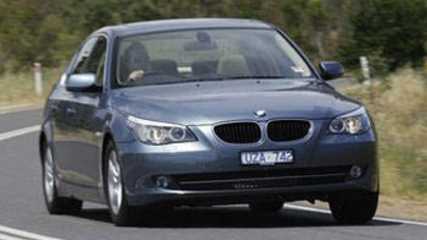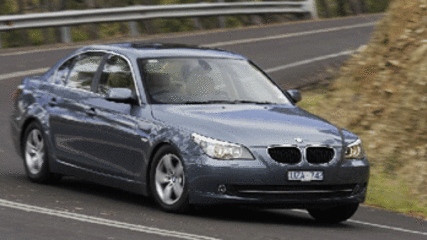BMW X3 2008 Review
By Bruce McMahon · 29 Jan 2008
There is, straight up, a great driving platform. The softroader's chassis is well-tuned to deliver a safe and secure drive with allowance for a little sporting flair; then there's the subtleness of the BMW's xDrive, an all-wheel drive system combined with stability control that delivers great grip and confidence.And now there is the option of this all-aluminium, four-cylinder engine that delivers a welcome combination of fun and frugalness.Allied to a fine six-speed automatic transmission, the common-rail engine also offers a cheaper entry price, at $62,900, into an X3 diesel.A three litre, six-cylinder diesel in the X3 will set the customer back $75,900 and that's beginning to look a tad over the odds; as fine as that bigger motor may be, this junior two-litre powerplant has quite enough charm for most.It is a mighty little motor, 60kg lighter than its big brother and producing a claimed 125kW at 4000rpm (62.7kW per litre) plus 340Nm of torque at 1750rpm.It, with only the slightest hesitation from a dead throttle, shifts the compact softroader with a surprising amount of verve.And, with some aid from that six-speed gearbox, the 2-litre diesel allows the X3 to be hustled along with more than enough speed over a mountain range to unsettle the most seasoned of passengers.There is precious little body roll or sway, bugger-all tyre protest.The problem is this Sports Activity Vehicle — as BMW would have it — is motoring through the mountains at a fair, still legal, pace and taking turns with a surprising amount of speed.This could upset some passengers while the driver may be looking towards connecting the next series of corners.Here there needs to be some ratio shifts (push forward to change down, back to change up) between third, fourth and perhaps fifth to make the most of the diesel's eagerness. It has a sporting sound and sporting edge; all the while the X3's chassis and 17-inch tyres keep the premium package unruffled.BMW claim a 0-100km/h time of 9.6sec for the wagon. This feels smart enough, certainly smart enough for attacking the flood-ravaged roads of the Border Ranges.Over there on the Kyogle side there was much evidence of walls of water shifting dirt and debris, underscoring river banks and bridge approaches, washing down fences and shifting boulders.Over there the BMW X3 was ideal for safe travel in comfort through the greens and browns of deluge-drowned valleys.With 101 fresh rocks and boulders littering the creek crossings there was little chance of tip-toeing into the paddocks.As good as the BMW's xDrive system may be, as much appreciated as 201cm of ground clearance may be, the X3 is best left to deal with mud-slopped roads and tracks. It continues to drive with confidence whether the surface is dry, wet, smooth or rough; it is also, with hill descent control, handy on steep descents.Besides, sill and sump damage to a full-on four-wheel drive is much easier to take.Yet the X3's engineering does blend excellent back track ability with fine bitumen road manners.And this new two litre motor makes the package that much more appealing.It is very flexible and always encouraging while managing some respectable fuel figures.According to BMW consumption on the EU test cycle is 7l/100km.Here, trawling around Brisbane town for a day saw the on-board computer register 8.5l/100km, climbing mountains and dodging along on flood-damaged roads saw 8.7 litres. And on steady highway and freeway runs that dropped to 6.3 litres.It is an easy machine around the city, quiet and useful on the highway though best to have the transmission in sport mode and drop from sixth to fifth for overtaking.There are no quibbles here with the engineering excellence. Or the amount of safety and comfort features from rain sensors to front, side and head airbags. But while the X3 received a little cosmetic makeover to the four-door body last season it could well be time for an interior rework.As fine as the materials used here are, as tactile as the knobs and buttons are, and as thankful some are that there's no iDrive (BMW's complicated control system for airconditioning to stereo and other bits in between), the X3 is looking a bit jaded in design, a bit drab around the dashboard.It all works, once the buttons and bells are learnt because some of these controls are not as intuitive or as clearly marked as in rivals. But it is all a bit old-school in a machine designed to appeal to a younger audience.And, while appreciating this is a compact SUV — sorry — SAV, the BMW's front cabin feels a tad cramped over a longer drive.Rivals in this area would appear to be a little more clever with finding oddment space.Here BMW could take a look at machines such as Hyundai's Santa Fe or Land Rover's second generation Freelander, much fresher inside and out. (A diesel Freelander at $57,990 is worth a good look if shopping in this area, the difference may be in resale values.)So, the two litre BMW X3 is a great driving machine in all manner of conditions. A great engine with excellent fuel figures. But at this money it's time for a major refresh of the packaging. BMW X3$62,900ENGINE: Two litre, turbocharged dieselPOWER: 125kW @ 4000rpmTORQUE: 340Nm @ 1750rpmTRANSMISSION: Six-speed automatic with SteptronicDIMENSIONS (MM): 4569 (l), 1853 (w), 1674 (h), 2795 (w'base)KERB WEIGHT: 1750kgTOWING: 1700kg









